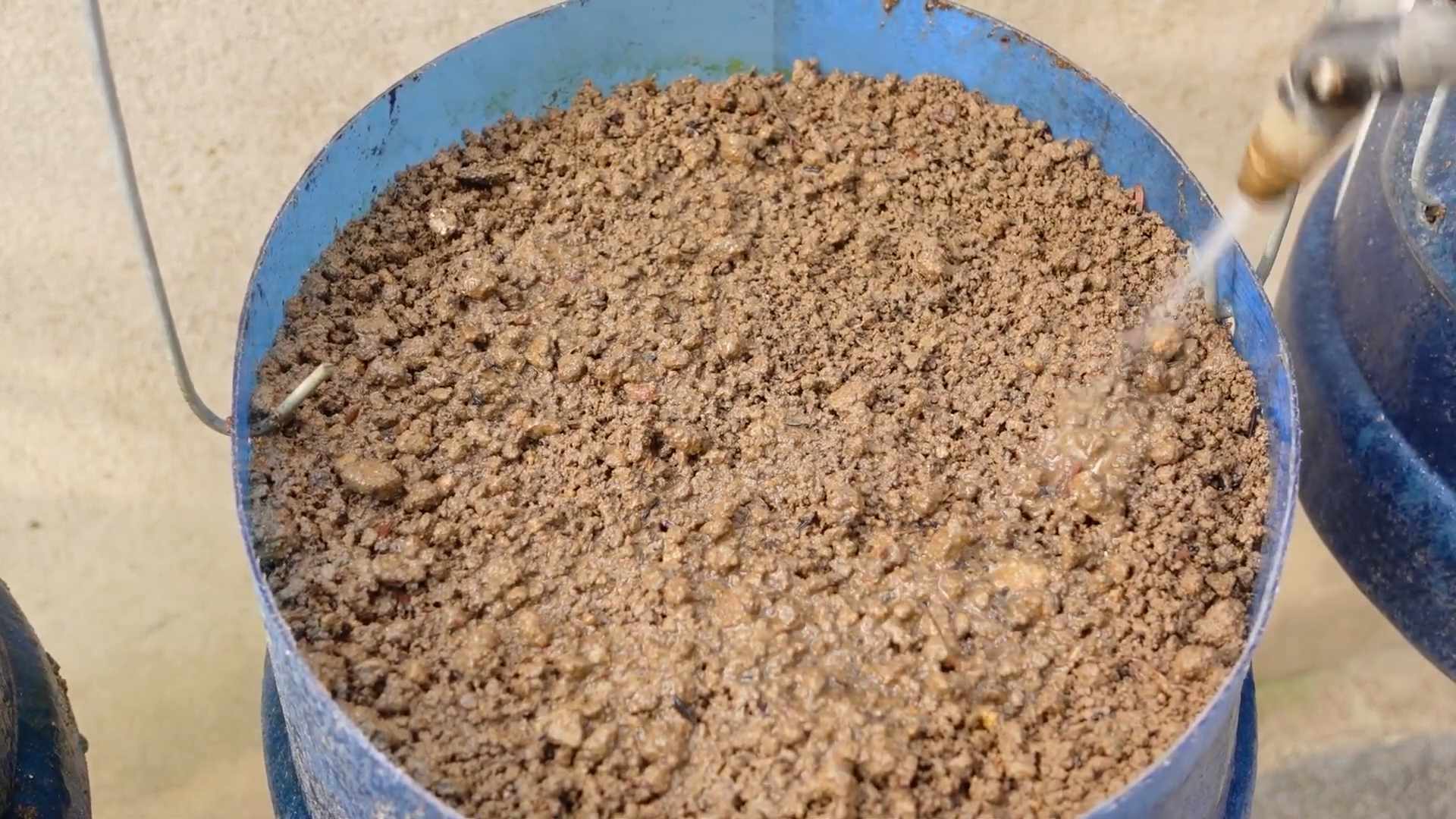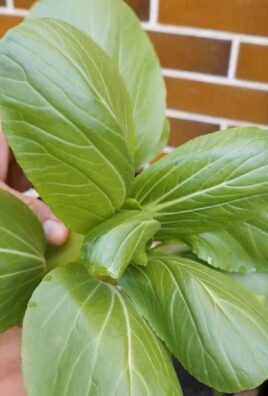Beginner veggie cooking hacks are your secret weapon to transforming bland vegetables into culinary delights! Have you ever stared into your fridge, overwhelmed by a pile of veggies, unsure how to make them taste… well, *good*? I know I have! For centuries, cultures around the globe have developed ingenious methods to coax out the natural sweetness and savory flavors hidden within these garden treasures. From ancient roasting techniques to clever spice combinations, the art of vegetable cookery is rich with tradition.
But let’s be honest, in today’s fast-paced world, who has time for complicated recipes and fussy techniques? That’s where these DIY veggie hacks come in. I’m going to share some simple, yet incredibly effective, beginner veggie cooking hacks that will revolutionize your meals. These aren’t just recipes; they’re game-changers that will save you time, reduce food waste, and, most importantly, make you actually *enjoy* eating your vegetables. Get ready to unlock the full potential of your produce and say goodbye to boring veggie dishes forever!

Beginner Veggie Cooking Hacks: Level Up Your Veggie Game!
Hey veggie lovers! Or maybe you’re a veggie-curious newbie? Either way, I’m here to share some of my favorite, super-easy veggie cooking hacks that will transform your meals from “meh” to “WOW!” These tips are perfect for beginners, and they’ll help you get the most flavor and nutrition out of your veggies. Let’s dive in!
Hack #1: Roasting Vegetables Like a Pro
Roasting is, hands down, my favorite way to cook vegetables. It brings out their natural sweetness and creates a delicious caramelized flavor. Plus, it’s incredibly simple!
Why Roasting Rocks:
* Flavor Explosion: High heat caramelizes the natural sugars in veggies, creating a richer, deeper flavor.
* Easy Peasy: Minimal prep work and hands-off cooking.
* Versatile: Works with almost any vegetable!
* Healthy: Requires minimal oil.
Vegetables That Shine When Roasted:
* Broccoli
* Cauliflower
* Brussels Sprouts
* Sweet Potatoes
* Carrots
* Bell Peppers
* Onions
* Garlic (whole cloves, trust me!)
Step-by-Step Roasting Guide:
1. Preheat Your Oven: Crank that oven up to 400°F (200°C). A hot oven is key for achieving that beautiful caramelization.
2. Prep Your Veggies: Wash and chop your chosen vegetables into roughly equal-sized pieces. This ensures they cook evenly. For root vegetables like sweet potatoes and carrots, I usually go for 1-inch cubes. For broccoli and cauliflower, florets are perfect.
3. Toss with Oil and Seasoning: In a large bowl, toss the veggies with a generous drizzle of olive oil (or your favorite cooking oil). Don’t be shy! Then, season with salt, pepper, and any other spices you love. Garlic powder, onion powder, paprika, and dried herbs like thyme or rosemary are all fantastic choices. I like to use about 1-2 tablespoons of oil per pound of vegetables.
4. Spread on a Baking Sheet: Arrange the veggies in a single layer on a baking sheet. Overcrowding the pan will steam the vegetables instead of roasting them. If you have a lot of veggies, use two baking sheets.
5. Roast to Perfection: Roast for 20-40 minutes, depending on the vegetable. Check for doneness by piercing with a fork. They should be tender and slightly browned. I like to flip them halfway through for even browning.
6. Enjoy! Serve immediately as a side dish or add them to salads, grain bowls, or pasta dishes.
Pro Tip: Don’t be afraid to experiment with different seasonings! A little chili powder can add a nice kick, while a squeeze of lemon juice after roasting brightens up the flavors.
Hack #2: Steaming Vegetables for Maximum Nutrients
Steaming is a gentle cooking method that preserves the nutrients in vegetables. It’s also a great way to cook veggies quickly and easily.
Why Steaming is Awesome:
* Nutrient Retention: Steaming minimizes nutrient loss compared to boiling.
* Quick and Easy: Steams vegetables in minutes.
* Healthy: Requires no oil.
* Versatile: Works well with delicate vegetables like asparagus, green beans, and spinach.
Vegetables That Love to Steam:
* Broccoli
* Asparagus
* Green Beans
* Spinach
* Snap Peas
* Carrots (thinly sliced)
Step-by-Step Steaming Guide:
1. Choose Your Steaming Method: You can use a steamer basket in a pot, a microwave steamer, or even just a pot with a small amount of water.
2. Prepare Your Veggies: Wash and chop your vegetables into bite-sized pieces.
3. Add Water: If using a steamer basket, add about an inch of water to the pot. Make sure the water doesn’t touch the bottom of the steamer basket. If using a microwave steamer, follow the manufacturer’s instructions.
4. Steam the Veggies: Place the vegetables in the steamer basket or microwave steamer. Cover and steam until tender-crisp. Steaming times will vary depending on the vegetable. Here are some guidelines:
* Broccoli: 5-7 minutes
* Asparagus: 3-5 minutes
* Green Beans: 5-7 minutes
* Spinach: 2-3 minutes
* Snap Peas: 3-5 minutes
* Carrots (thinly sliced): 5-7 minutes
5. Season and Serve: Once the vegetables are steamed, remove them from the steamer and season with salt, pepper, and a drizzle of olive oil or lemon juice. You can also add other seasonings like garlic powder, herbs, or a sprinkle of Parmesan cheese.
Pro Tip: To prevent overcooking, check the vegetables frequently while steaming. They should be tender-crisp, meaning they’re cooked through but still have a slight bite.
Hack #3: Sautéing Vegetables for a Quick and Flavorful Meal
Sautéing is a great way to cook vegetables quickly in a skillet or wok. It’s perfect for weeknight meals when you’re short on time.
Why Sautéing is a Winner:
* Fast Cooking: Sautéing cooks vegetables quickly over high heat.
* Flavorful: Creates a slightly browned and caramelized exterior.
* Versatile: Works with a wide variety of vegetables.
* Easy to Customize: You can easily add different sauces and seasonings.
Vegetables That Love to Sauté:
* Onions
* Bell Peppers
* Mushrooms
* Zucchini
* Summer Squash
* Spinach
* Garlic
Step-by-Step Sautéing Guide:
1. Prep Your Veggies: Wash and chop your vegetables into bite-sized pieces.
2. Heat Your Pan: Heat a large skillet or wok over medium-high heat. Add a tablespoon or two of cooking oil.
3. Add Aromatics: Add any aromatics like onions, garlic, or ginger to the pan and sauté for a minute or two until fragrant.
4. Add the Vegetables: Add the vegetables to the pan and sauté, stirring frequently, until they are tender-crisp. Cooking times will vary depending on the vegetable.
5. Season and Sauce: Season with salt, pepper, and any other spices you like. You can also add a sauce like soy sauce, teriyaki sauce, or a simple lemon-garlic sauce.
6. Serve: Serve immediately as a side dish or add them to stir-fries, pasta dishes, or tacos.
Pro Tip: Don’t overcrowd the pan! If you have a lot of vegetables, sauté them in batches to ensure they cook evenly.
Hack #4: Grilling Vegetables for Smoky Goodness
Grilling adds a smoky flavor to vegetables that’s simply irresistible. It’s a perfect way to enjoy veggies during the summer months.
Why Grilling is the Bomb:
* Smoky Flavor: Grilling imparts a delicious smoky flavor to vegetables.
* Healthy: Requires minimal oil.
* Fun and Festive: Grilling is a great way to enjoy the outdoors.
* Visually Appealing: Grill marks make vegetables look extra appetizing.
Vegetables That Are Grill Masters:
* Bell Peppers
* Zucchini
* Eggplant
* Onions
* Corn on the Cob
* Asparagus
Step-by-Step Grilling Guide:
1. Prepare Your Grill: Preheat your grill to medium-high heat.
2. Prep Your Veggies: Wash and chop your vegetables into large pieces. For smaller vegetables like asparagus, you can grill them whole.
3. Brush with Oil: Brush the vegetables with olive oil or your favorite cooking oil. This will prevent them from sticking to the grill.
4. Grill the Veggies: Place the vegetables on the grill and cook for 3-5 minutes per side, or until they are tender and slightly charred.
5. Season and Serve: Season with salt, pepper, and any other spices you like. You can also add a drizzle of balsamic glaze or a squeeze of lemon juice.
Pro Tip: To prevent vegetables from falling through the grill grates, use a grill basket or skewers.
Hack #5: Making Vegetable Stock from Scraps
Don’t throw away those vegetable scraps! You can use them to make a delicious and flavorful vegetable stock.
Why Making Your Own Stock is Genius:

Conclusion
So, there you have it! Mastering these beginner veggie cooking hacks is more than just a way to save time and effort in the kitchen; it’s a gateway to a world of vibrant flavors and healthier eating habits. We’ve explored simple techniques that transform everyday vegetables into culinary delights, from roasting for maximum sweetness to quick-pickling for a tangy kick. These aren’t just recipes; they’re foundational skills that will empower you to confidently experiment and create your own veggie-centric masterpieces.
Why is this a must-try? Because it’s accessible, affordable, and incredibly rewarding. Forget complicated recipes and hours spent prepping. These hacks are designed for busy individuals who want to enjoy delicious, nutritious meals without the fuss. Imagine effortlessly whipping up a flavorful side dish in minutes, or transforming leftover vegetables into a gourmet salad topping. The possibilities are endless!
But don’t stop there! Feel free to experiment with variations. Try adding different herbs and spices to your roasted vegetables, like rosemary and thyme for a classic flavor, or chili flakes for a touch of heat. When quick-pickling, swap out the vinegar for lemon or lime juice for a brighter, more citrusy flavor. You can even add a pinch of sugar or honey to balance the acidity. For steaming, consider adding a bay leaf or a few slices of ginger to the water for an aromatic infusion. The key is to have fun and discover what flavors you love best.
And remember, these hacks aren’t just for beginners. Even seasoned cooks can benefit from these time-saving techniques. They’re a great way to streamline your cooking process and focus on what truly matters: creating delicious, healthy meals that you and your loved ones will enjoy.
We wholeheartedly encourage you to try these beginner veggie cooking hacks and share your experience with us. What are your favorite vegetables to cook using these methods? What variations did you try? What tips and tricks have you discovered along the way? Share your photos and stories on social media using #VeggieHacks and let’s inspire others to embrace the joy of cooking with vegetables.
Ultimately, these hacks are about making healthy eating more accessible and enjoyable. By mastering these simple techniques, you’ll be well on your way to incorporating more vegetables into your diet and reaping the numerous health benefits they offer. So, grab your favorite vegetables, get into the kitchen, and start experimenting! You might be surprised at how easy and delicious it is to cook with vegetables. Embrace the power of these beginner veggie cooking hacks and unlock a world of culinary possibilities.
FAQ
What if I don’t have all the equipment listed?
Don’t worry! These hacks are designed to be adaptable. If you don’t have a steamer basket, you can use a metal colander placed inside a pot with a tight-fitting lid. Just make sure the colander doesn’t touch the water. For roasting, any baking sheet will work, although a rimmed baking sheet is ideal for preventing spills. And if you don’t have a mandoline for slicing vegetables thinly, a sharp knife and a steady hand will do the trick. The most important thing is to use what you have and not let the lack of specific equipment deter you from trying these techniques.
How do I know when my vegetables are cooked properly?
The cooking time for vegetables can vary depending on the type of vegetable, the size of the pieces, and your personal preference. For roasting, vegetables are typically done when they are tender and slightly browned. You should be able to easily pierce them with a fork. For steaming, vegetables should be tender-crisp, meaning they are cooked through but still have a slight bite. For quick-pickling, the vegetables will soften slightly and absorb the flavor of the brine. The best way to determine doneness is to taste them!
Can I use frozen vegetables for these hacks?
Yes, you can! Frozen vegetables are a great option for convenience and can be used in many of these hacks. For roasting, thaw the vegetables slightly before roasting to prevent them from becoming soggy. For steaming, you can steam frozen vegetables directly from the freezer, but they may take a little longer to cook. For quick-pickling, frozen vegetables may not work as well, as they can become mushy.
How long do quick-pickled vegetables last?
Quick-pickled vegetables will typically last for about a week in the refrigerator. Be sure to store them in an airtight container to prevent them from drying out. The flavor of the pickled vegetables will continue to develop over time, so they may taste even better after a few days.
What are some good vegetables to roast?
The possibilities are endless! Some of the best vegetables to roast include root vegetables like carrots, potatoes, sweet potatoes, and parsnips. Other great options include broccoli, cauliflower, Brussels sprouts, bell peppers, and onions. You can even roast tomatoes and garlic for a burst of flavor. Experiment with different combinations and find your favorites.
Can I add protein to these veggie dishes?
Absolutely! These veggie hacks are a great base for adding protein. Roasted vegetables pair perfectly with grilled chicken, fish, or tofu. Steamed vegetables can be tossed with chickpeas or lentils for a hearty and nutritious meal. And quick-pickled vegetables can be added to salads with grilled shrimp or hard-boiled eggs.
What if my vegetables are burning when I roast them?
If your vegetables are burning, it could be due to a few factors. First, make sure your oven temperature is accurate. Second, try tossing the vegetables with a little more oil before roasting. Third, you can try lowering the oven temperature slightly and roasting the vegetables for a longer period of time. Finally, make sure you are not overcrowding the baking sheet, as this can prevent the vegetables from browning properly.
How can I make my roasted vegetables more flavorful?
There are many ways to enhance the flavor of roasted vegetables. Try adding different herbs and spices, such as rosemary, thyme, garlic powder, onion powder, or chili flakes. You can also drizzle the vegetables with balsamic vinegar or lemon juice after roasting. Another great tip is to roast the vegetables with a head of garlic. The roasted garlic will add a sweet and savory flavor to the vegetables.
What’s the best oil to use for roasting vegetables?
The best oil to use for roasting vegetables is one with a high smoke point, such as avocado oil, grapeseed oil, or canola oil. Olive oil can also be used, but it has a lower smoke point and may start to smoke at higher temperatures.
Can I use these hacks for meal prepping?
Yes, absolutely! These hacks are perfect for meal prepping. You can roast a large batch of vegetables on the weekend and use them throughout the week in salads, bowls, or as side dishes. Steamed vegetables can also be stored in the refrigerator for several days. And quick-pickled vegetables are a great way to add flavor and variety to your meal prep.




Leave a Comment